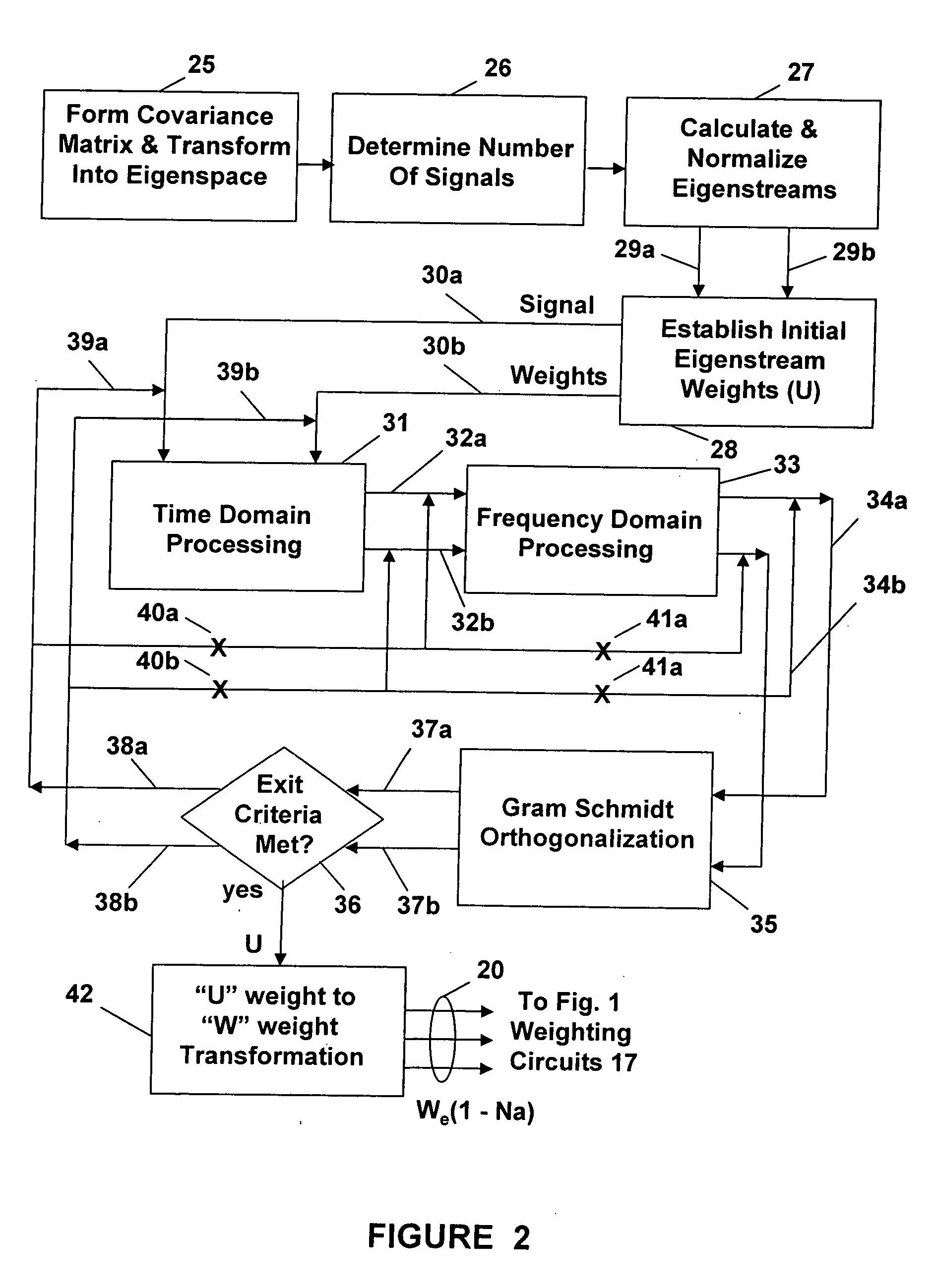Method for separating interferering signals and computing arrival angles
- Summary
- Abstract
- Description
- Claims
- Application Information
AI Technical Summary
Benefits of technology
Problems solved by technology
Method used
Image
Examples
Embodiment Construction
[0044] The novel Copy Capture Algorithm (CCA) captures and copies co-channel interfering signals by a union of fast Fourier transform (FFT) frequency domain processing and non-linear time domain processing that is different than the constant modulus algorithm (CMA) described in a paper by Agee identified in the Background of the Invention. Copy signal orthogonalization,(signal independence is assumed) of equally weighted eigenstreams is used in conjunction with my novel capture / thresholding process to spatially separate the interfering signals. The CCA time and frequency domain processing uses normalized spectral bin f(ωi) / |f(ωi)| and f(ti) / |f(ti)| multiplications to capture the strongest signal at each step, for each output, as the beam former converges. Time domain and fast Fourier transform bin thresholding is the key to the capture process, and only strong spectral and time domain complex samples are used as product elements for each new iteration of eigenstream processing.
[004...
PUM
 Login to View More
Login to View More Abstract
Description
Claims
Application Information
 Login to View More
Login to View More - R&D
- Intellectual Property
- Life Sciences
- Materials
- Tech Scout
- Unparalleled Data Quality
- Higher Quality Content
- 60% Fewer Hallucinations
Browse by: Latest US Patents, China's latest patents, Technical Efficacy Thesaurus, Application Domain, Technology Topic, Popular Technical Reports.
© 2025 PatSnap. All rights reserved.Legal|Privacy policy|Modern Slavery Act Transparency Statement|Sitemap|About US| Contact US: help@patsnap.com



